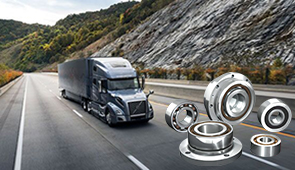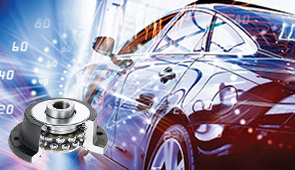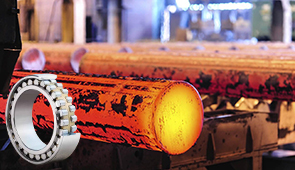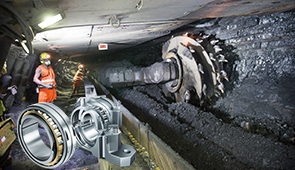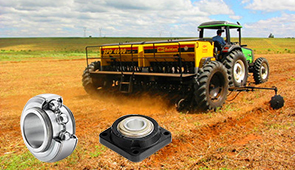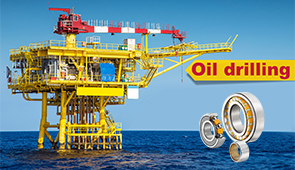Unraveling the Intricacies of Cam Follower Bearings
Cam follower bearings, often considered the backbone of motion transfer in numerous mechanical systems, are crucial components that bridge the gap between rotary and linear movement. Their unique design and functionality make them indispensable in a variety of industries, from automotive to manufacturing. However, despite their widespread use, the intricate mechanisms and diverse applications of cam follower bearings often remain overlooked or misunderstood. This article aims to demystify these essential elements, exploring their construction, variations, and operational principles. Whether you’re an engineer, a machinery enthusiast, or someone interested in mechanical systems, this comprehensive guide will provide you with a deeper understanding of how cam follower bearings contribute to efficiency, precision, and durability in modern machinery.
What is a Bearing and How Does it Work?
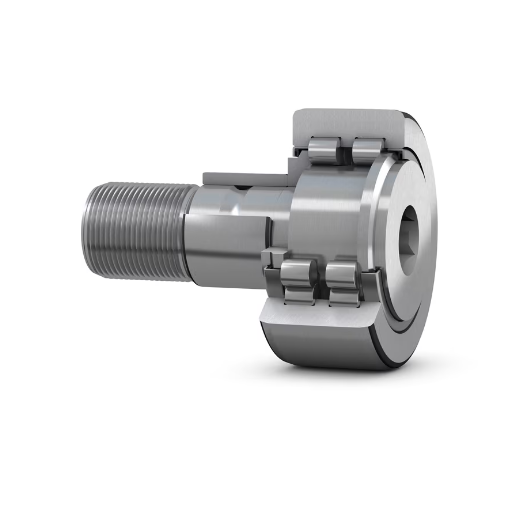
Understanding the Basics of a Bearing
Bearings as machinery components help reduce friction that occurs when parts move relative to each other, facilitating the smooth transfer of load while enabling motion to take place. This is accomplished by providing a rolling or sliding interface, which conserves energy lost to friction. Primarily from a mechanical standpoint, bearings are essential components in linear and rotary systems, ensuring accuracy while extending the service life of machines.
Most frequently, a bearing will consist of an inner and outer ring that encompass rolling elements, which can be balls or rollers. Restriction of lubricant flow outward and applying appropriate bearing noises, such as no oil, air, or grease, results in drag and adds friction within the bearing assembly. Depending on application requirements, bearings can be made with different materials, which may include steel, ceramic, and polymer, for performance demands like high speed, loading, or endurance to harsh environments.
Bearings are categorized to include ball bearings, roller bearings, and needle bearings, among others, serving diverse conditions and mechanical requirements. For instance, ball bearings are fitting for use in high-speed applications owing to their low friction, while roller bearings provide better performance with large radial loads. Through appropriate selection of bearing type, equipment reliability, machine performance, and energy use are optimized.
Different Types of Bearings: Needle Roller, Ball Bearings, and More
Bearings are crucial parts in mechanical systems that need to enable movement and reduce friction between parts. To ensure reliability and perform optimally, the selection of the appropriate bearing type must be precise. These include, among others, ball bearings, needle roller bearings, and cylindrical roller bearings, each suited for specific applications and load conditions.
Ball bearings are widely used and versatile because they can manage both radial and axial loads. They’re useful for high-speed mechanisms such as motors, turbines, and precision instruments because of their minimal friction. On the other hand, tasks that involve high radial loads are not suited for ball bearings, as other types, such as roller bearings, are better at that.
Needle roller bearings have thinner cylindrical rollers, which distinguish them. These rollers allow for a compact profile while maintaining a high load-carrying capacity. They are particularly useful in limited-space scenarios, such as automotive gearboxes and power tools. Cylindrical roller bearings are ideal for heavy radial loads and are customarily found in industrial machinery, such as compressors and conveyors, that need to be durable and well-controlled. Selecting the correct bearing improves machine efficiency, increasing lifespan, reducing the need for maintenance, and lessening wear.
The Role of Bearing in Reducing Friction
Bearings are crucial in friction management because they limit the actual contact between parts in motion. This is accomplished by rolling parts like balls or rollers that are set in the bearing. These rolling parts enable motion freely with minimum hindrance, which in turn reduces energy spent in running machines and averts damage done by sliding friction.
The bearings’ structure is optimized to evenly distribute the load over the components, enabling all parts of the bearing to carry the load uniformly. Localized stress tends to weaken materials over time, increasing friction and deteriorating them due to heat, and localized stress caused by sliding friction. Lubrication within the bearing can perform even better than when the active bearing walls provide a moving component in place of static one, through shearing them, thus providing a torque on the walls, provided on sufficient rotation, generating work/conserving energy, reducing the opposing forces acting to keep motion from happening, heat when friction causes to be generated due to sliding surfaces, with smoother action without any counterforces maximizing the torque. Care is crucial for these benefits because proper lubrication inactive removes contaminants with no motion, so they cannot increase friction and cause damage to the bearing, thus keeping the system intact while repairing the bearing.
Bearings allow machines to work reliably in different operational conditions by offering precise motion control and limiting the loss of energy in the machine. Bearings are critical components for the efficient and reliable operation of industrial machinery, automotive devices, and aerospace systems. Choosing the best bearing type for a given application will guarantee maximum performance while protecting the system against damage through excessive friction and wear. These characteristics place bearings at the forefront of mechanical components in contemporary technology.
How Do Cam Followers Function?
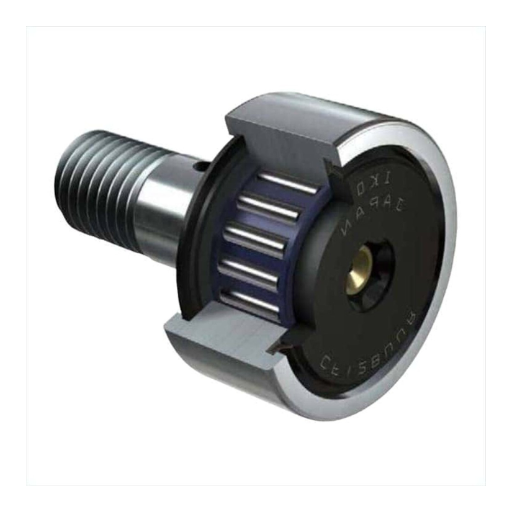
The Mechanics Behind Cam Follower Bearings
Cam follower bearings are defined as a particular category of rolling-element bearings that are designed to follow the contour of a cam profile to change circular motion into linear movement. Such bearings generally have an inner pin and a thick outer shell that acts as a rotation surface (thrust washer); also, depending on the specifics of the design, mathey y contain a needle roller, cylindrical roller, or ball bearing assembly.
The external surface of the cam follower is also equipped with a stud or yoke, which is fixed to the moving parts of mechanical systems. This design allows these types of bearings to withstand great radial forces together with low axial forces, when moving on cam surfaces.
Like crowned outer rings, crowned designs are used to auxiliary edge stresses and the chances of deformation due to a load. Enhancements in surface coatings like chromium and black oxide also improve the corrosion resistance, as modern coatings further increase the service life in harsh duty applications. Aside from these features, proper alignment and accurate mounting are also essential to the operational accuracy and reliability of cam followers used in robotics, manufacturing, and automotive systems.
Applications of Cam Followers in Various Industries
Owing to their ability to manage large radial loads, minimize friction, and offer control over sequential steps, cam followers are vital components for various industrial applications. These tools serve a major purpose in five key sectors that rely heavily on the cam follower’s capabilities.
- Automotive Sector: Cam followers find application in internal combustion engines, auxiliary systems, engine automotives, valve actuators, and others. They need to withstand fuel combustion and high-speed functions, in other words, undergo strenuous activities, which is essential for precision fuels. For example, in modern automobiles, specialized needle bearing cam followers are often used to optimally manage fuel usage and mechanical degradation.
- Robotics and Automation: Cam followers are vital components for linear and rotational applications in robotic systems. They enable the proper functioning of robotic arms, conveyor systems, as well as automated pick-and-place systems. In addition to that, their precision guarantees the repeatability of cam followers, ensuring cam followers enable consistent functionality, which is important in some processes that require high precision, on as semiconductor manufacturing, as well as production for medical devices.
- Textile Manufacturing: In the textile industry, cam followers are utilized in looms and knitting machines, and are important in fabric production where tension, consistency, and precision matter. Cam followers in these machines have to withstand long periods of severe usage cycles, due to their high operational speeds, ensuring operational efficiency and product quality.
- Food Processing: As with all industries, the food industry adheres to a strict hygienic protocol, and during the processing of food, cam followers are used in packing machines, conveyors, and fillers. In order to meet regulatory compliance and cleanliness standards, stainless steel cam followers with high resistance to corrosion and sealed lubrication systems are used.
- Aerospace Industry: For aerospace systems, there are stub shafts with high cam followers, and these can withstand severe temperature changes. It is found in the control surfaces, the landing gear systems, and the engines of the aircraft. Aerospace-grade cam followers are made with advanced materials, which greatly improve their reliability and reduce maintenance even in advanced, overly harsh environments.
Because of the ever-increasing advances in technology, the multifunctionality and versatility of cam followers make their use in a whole range of emerging and oldest technologies require them. The further advanced a material scientist and precision engineer is, the better the performance achieved using them.
Advantages of Using Cam Followers
- Heavy Load Capacity
Cam followers support significant radial and axial loads, which makes them ideal for very tough applications. Some models are made from high-alloy steels and advanced heat treatment, giving them load ratings above 10,000 pounds, which sustains industrial systems.
- High Endurance
Chromium and nitride materials-based coatings ward off corrosion, enduring higher temperatures. This grants durability while protecting a device from harsh elements.
- Low Maintenance
Self-lubricating and built-in lubricating systems are commonly found in cam followers. Certain models enable over a thousand hours of ceaseless maintenance, boosting operational turnover while reducing downtime.
- Sharpness and Seamless Movement
Tight manufacturing tolerances and advanced engineering guarantee smooth motion. As seen with robotics or CNC machines, systems relying on precision outperform competitors, making precision vital across all systems.
- Adaptable Uses
Cam followers can be yoke rollers or stud-type, which means that they can be altered to fit different spatial and operational requirements. These cross-industry adaptable features help the automotive and aerospace industries, proving useful to legacy and new-age technologies alike.
What Makes a Follower Bearing Unique?
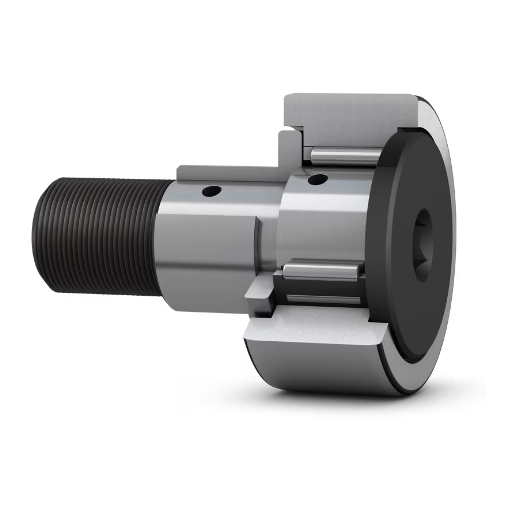
Key Features of Follower Bearings
Follower bearings are distinguished by their rugged construction, outstanding load-bearing applications, and unusual resistance to wear even in challenging conditions. These traits are especially helpful in the performance of very precise functions in extreme stress environments where absolute precision and strength are needed. They are designed to sustain the heavy radial loads without frictional rotation, which helps in diminishing wear and increasing machine life.
The compact design of follower bearings also broadens their usefulness in numerous other domains. For example, their use in cam mechanisms allows for accurate linear or rotational movements. In addition, they can be used in sealed or open configurations, which makes them adaptable to extreme temperatures or pollution, even in highly abrasive environments.
The ability to control accurate movement while bearing high mechanical loads makes these parts most crucial in industries where endurance and variability are needed. In modern engineering systems like production lines, robotics, and transport systems, follower bearings are used everywhere, showcasing their invaluable contribution.
Comparing Follower Bearings with Other Bearing Types
Cam follower bearings are analyzed concerning their design, load capacity, and suitability for to application against roller followers, needle bearings, and ball bearings.
| Aspect | Cam Follower | Roller Follower | Needle Bearing | Ball Bearing |
|---|---|---|---|---|
|
Structure |
Includes shaft |
Needs an existing shaft |
Thin shell |
Spherical balls |
|
Strength |
High |
High |
Moderate |
Low |
|
Usage |
Tracks, cams |
Linear motion |
Compact spaces |
General rotation |
|
Lifespan |
High |
High |
Moderate |
Low |
|
Expense |
Higher |
Moderate |
Low |
Low |
How to Select the Right Cam Follower Bearing?
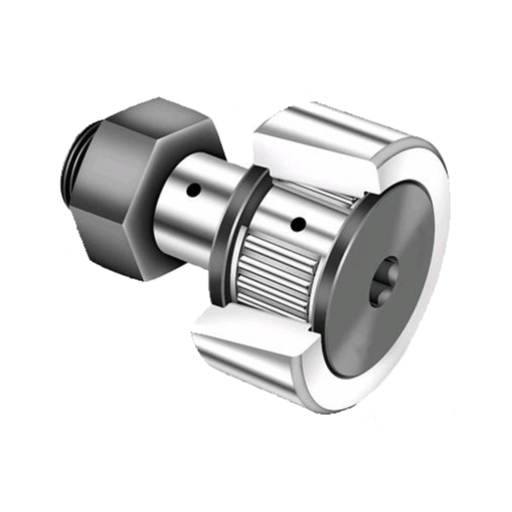
Factors to Consider: Diameter, Load Capacity, and More
Like with every choice, picking the right cam follower bearing requires attention to detail regarding performance and longevity, so analyzing differing technical parameters will be essential. The shaft diameter of the bearing needs consideration because it affects both speed and alignment, hence, it needs accuracy in picking. Too large shaft diameters increase friction unreasonably, and too small ones cause instabilities under load.
Fulfilling the designated application also changes the scenario. Applying radial and axial mechanical loads requires the bearing to have particular specifications relative to the operational requirements of hooks. In contrast, heavy-duty applications where the expected value is high necessitate adopting the needle roller cam follower due to better load distribution and rigidity.
Stainless steel and alloys tend to have better resistance towards corrosion, wear, and high temperatures, which affects the material composition. For demanding environments such as chemical or extreme temperature exposure, using high-grade alloys makes the bearing more durable.
Self-lubricating cam follower bearing or bearing with grease fittings can help reduce maintenance activities. Consequently, applying integrated grease fittings decreases the chance of isotropic throughput and mechanical breakdown due to a lack of lubrication, which becomes imperative for these instances. Alongside, lubrication is crucial for maintaining bearing efficiency and longevity.
Finally, factors such as the existence of impurities, contaminations, vibrations, and the necessary precision need to be examined. For certain applications, specialized sealing systems and anti-vibration mechanisms may be necessary to maintain the highest reliability and operational performance.
Stud Type vs. Yoke Type: Which to Choose?
The selection between Stud Type and Yoke Type depends greatly on operational needs, load conditions, and specifics of the application. Stud-type cam followers have an integral stud, which makes them easy to install on machine parts. This configuration works best for applications with a primary focus on ease and space optimization. Due to such attributes, stud-type cam followers find applications in automation machinery, assembly lines, and indexing mechanisms. These self-contained cam followers are easy to install, which provides them with a unique competitive advantage.
On the other hand, Yoke Type cam followers come without an integral stud and are made to be placed on a shaft or pin. This offers them greater load-bearing strength and makes them ideal for applications with increased radial loads and greater resistance to misalignment. That’s why Yoke Type cam followers are mostly used in heavy-duty applications such as construction equipment, conveyor systems, or industrial presses where strength is critical.
While selecting stud or yoke type, it is it important to consider how they differ in aid to load sharing and mounting, available space, and environment. Moreover, recent developments in bearing materials like modern alloys using advanced surface finishing techniques have enhanced the efficiency of both types for different applications. Choosing the right type improves the system’s operation, enhances reliability, increases life span, and boosts overall efficiency.
Why are Track Followers Essential in Conveyor Systems?
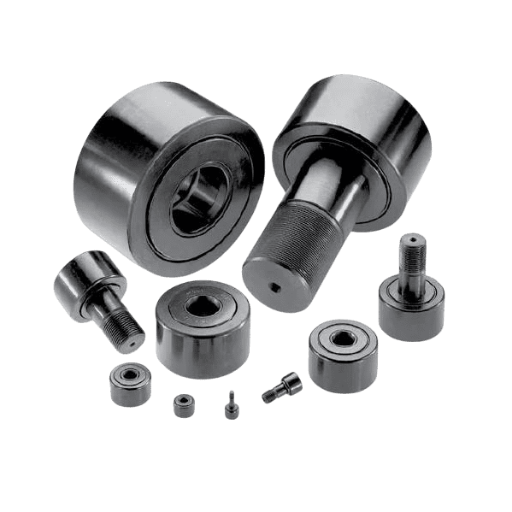
The Role of Cam Followers in Conveyor Systems
Cam followers are crucial for the smooth functioning of conveyor systems. Their specific construction enables them to endure high radial and axial loads under severe stress, high temperature, and intense dynamic conditions. Here are the major roles that cam followers play in conveyor systems:
- Bearing and Distributing Loads: Distributing the weight across the CNC conveyor system must be done manually while handling significant radial and axial loads. Cam followers ensure the proper distribution of weight, which allows for smooth operations while dealing with materials of high weight.
- Precision in Guided Motion: As a form of motion control, cam followers give exact linear motion relative to the rails or guides, which makes them important in achieving alignment and minimal operational deviations within conveyor lines.
- High Wear Resistance in Friction Areas: In conveyor systems that undergo severe wear and tear, cam followers need to operate in less-than-ideal environmental conditions. Even so, they must maintain a high degree of wear and friction resistance thanks to the materials used in their construction and surface treatments applied to them.
- Reduced Maintenance Time: A rise in productivity is possible with a decrease in maintenance needs. Most cam followers have lubrication channels and sealed designs, which leads to greatly decreasing emphasis on routine maintenance. This results in improved productivity due to reduced downtime within conveyor operations.
- Support for High-Speed Applications: Cam followers’ modern-day versions are designed to endure high speeds while maintaining stability under load. This feature is important in fields like automotive manufacturing or food processing, where conveyor belts run at high speeds.
Every cam follower’s adaptability and toughness make it a vital element for wide-reaching industrial applications. This versatility is crucial for maintaining reliability, efficiency, and durability within conveyor systems.
Improving Efficiency with Track Followers
The prominence of followers as track components aids in improving the industrial system efficiency, especially in cases of conveyors and linear motion applications. Designed for high precision positioning, high load-bearing motion, as well as for straining conditions, these devices smoothened movements with frictionless and minimal wear systems. Moreover, most modern track followers come with sophisticated designs that provide low-friction sealed bearings, non-corrosive components, better lubrication systems, and other mechanisms that reduce maintenance work.
As an example, modern innovations in track followers include the use of alloys and composites that can endure extreme temperatures and harsh environments. It’s especially useful in heavy manufacturing or food production industries where operational conditions are particularly difficult. Moreover, modern data-driven systems make it possible to use predictive maintenance strategies by integrating IoT-enabled sensors on the followers themselves.
Incorporation of such advanced track followers enables achievement of faster operational cycles, reduced energy consumption, greater system reliability, thus having a positive impact on productivity, reducing cost, and increasing profit. The efficient movement of mechanical systems in complex tracks emphasizes the importance of track followers in industrial operations.
Frequently Asked Questions (FAQ)
Q: What is a cam follower bearing?
A: A cam follower bearing is a specialized type of roller bearing designed to follow cam or track profiles. It converts rotary motion into linear motion and is used in applications where this transformation is necessary.
Q: How does a cam follower bearing convert rotary motion into linear motion?
A: Cam follower bearings convert rotary motion into linear motion by following the cam or track profiles they are designed to track. This action allows the bearing to move linearly as the camshaft rotates.
Q: What are the different styles of cam follower bearings?
A: Cam follower bearings come in two main styles: stud style and yoke style. The stud style features a standard bearing and bolt configuration, while the yoke style includes a cylindrical outer ring that can handle higher static loads.
Q: How do tapered roller bearings differ from cam follower bearings?
A: Tapered roller bearings are a type of roller bearing designed to handle both radial and axial loads, while cam follower bearings are specifically designed to follow cam or track profiles and convert rotary motion into linear motion.
Q: Why are cam follower bearings essential in conveyors or process transfer lines?
A: Cam follower bearings are essential in conveyors or process transfer lines because they offer reliable anti-friction performance, helping to ensure smooth and efficient movement along the designated paths.
Q: What is the role of relubrication in cam follower bearings?
A: Relubrication is important in cam follower bearings to maintain optimal performance and extend their lifespan. Proper lubrication minimizes wear and helps the bearings operate smoothly.
Q: How do cam follower bearings help in following cam lobe profiles?
A: Cam follower bearings are designed to precisely follow cam lobe profiles, ensuring that the desired motion is transferred accurately from the rotating camshaft to the intended linear motion path.
Q: What are some applications where cam follower bearings are used?
A: Cam follower bearings are used in various applications, including cam mechanisms, conveyors, process transfer lines, and machinery where rotary motion needs to be converted into linear motion effectively.
UCTH213-40J-300 with Setscrew(inch)
CNSORDERNO: Normal-duty(2)
TOGN: UCTH213-40J-300
SDI: B-R1/8
SD: 2 1/2
UCTH212-39J-300 with Setscrew(inch)
CNSORDERNO: Normal-duty(2)
TOGN: UCTH212-39J-300
SDI: B-R1/8
SD: 2 7/16
UCTH212-38J-300 with Setscrew(inch)
CNSORDERNO: Normal-duty(2)
TOGN: UCTH212-38J-300
SDI: B-R1/8
SD: 2 3/8
UCTH212-36J-300 with Setscrew(inch)
CNSORDERNO: Normal-duty(2)
TOGN: UCTH212-36J-300
SDI: B-R1/8
SD: 2 1/4
UCTH211-35J-300 with Setscrew(inch)
CNSORDERNO: Normal-duty(2)
TOGN: UCTH211-35J-300
SDI: B-R1/8
SD: 2 3/16
UCTH211-34J-300 with Setscrew(inch)
CNSORDERNO: Normal-duty(2)
TOGN: UCTH211-34J-300
SDI: B-R1/8
SD: 2 1/8










